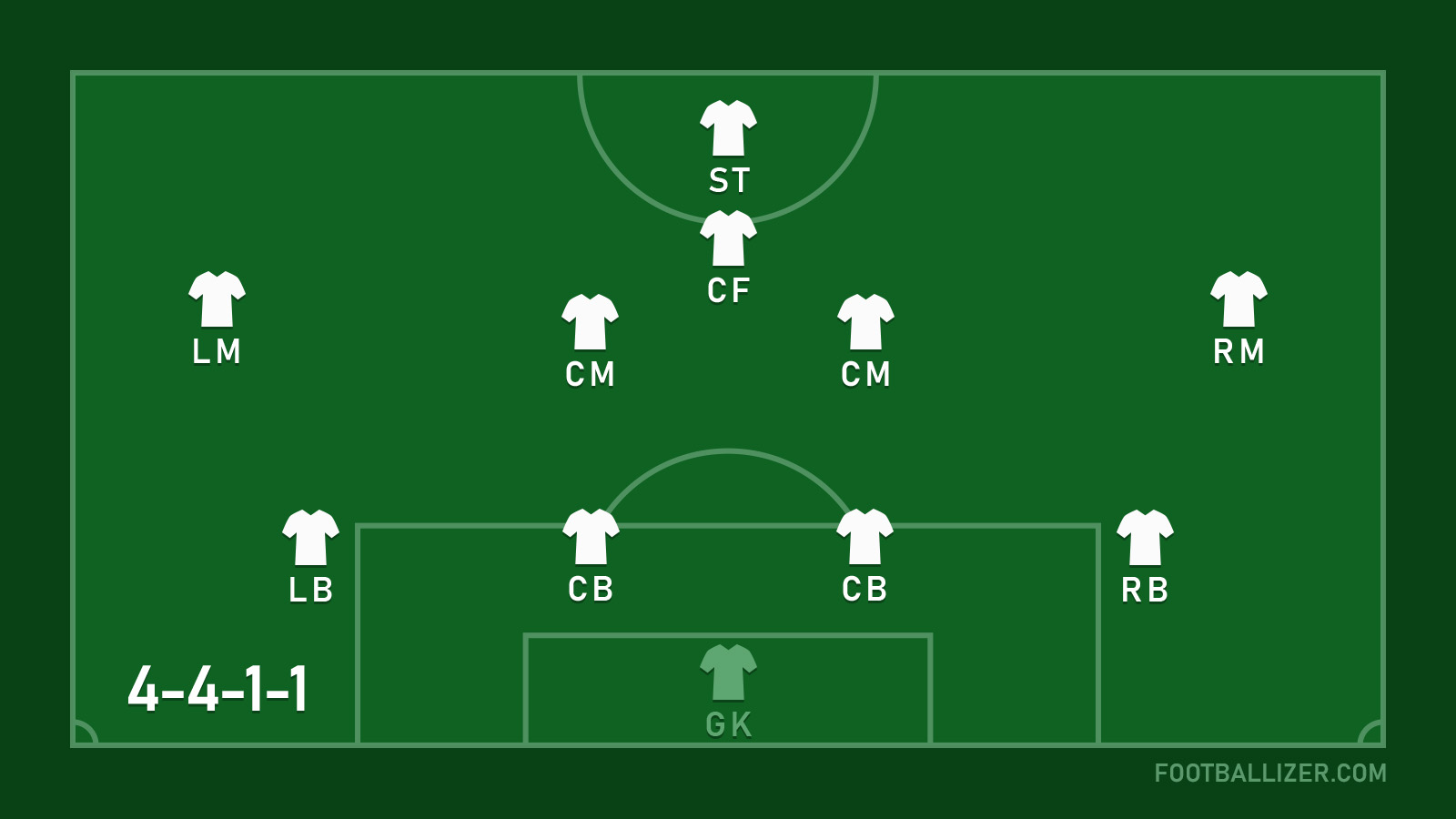4-4-1-1 Formation

The 4-4-1-1 formation is a versatile and dynamic setting that can be used to create a strong defensive structure while still providing ample attacking opportunities. The formation features four defenders, four midfielders, one attacking midfielder, and one forward, making it a balanced formation that can adapt to a range of playing styles.
4-4-1-1 can be used in both attacking and defensive strategies depending on the team's tactics and the style of play.
At its core, the 4-4-1-1 formation is designed to provide a solid defensive foundation while still allowing for creative attacking play. The four defenders provide a strong defensive line that can withstand pressure from the opposition, while the midfielders work to disrupt the opposition's attacking play and create chances for their own team.
The attacking midfielder is the key to the 4-4-1-1 formation, as they are tasked with creating opportunities for the forward while also contributing to the team's defensive efforts. They must be able to read the game and make intelligent runs into space, as well as possess the technical skills necessary to create chances for themselves and their teammates.
The forward in a 4-4-1-1 formation is typically a lone striker who must be able to hold the ball up and bring the attacking midfielder and other midfielders into play. They must also possess the finishing ability to convert the chances that are created for them.
Advantages
Defensive Solidity
The formation provides a solid defensive structure with four defenders, four midfielders, and one striker dropping back to defend. This can make it difficult for the opposition to break through and create scoring opportunities.
Counter-Attacking
The formation allows for quick counter-attacks, with the striker and attacking midfielder able to link up and quickly move the ball forward. Flexibility: The 4-4-1-1 formation is a flexible formation that can adapt to different situations. It can be used to control possession, dominate the midfield, or sit back and defend.
Midfield Freedom and Control
The formation allows for good midfield control, with four midfielders who can control the game and dictate the tempo. This can be particularly effective against teams that rely heavily on their midfield.
Attacking Support
The attacking midfielder can provide support to the striker and create scoring opportunities, while the four midfielders can provide additional support in attack.
Disadvantages
Lack of Width
The formation relies heavily on the four midfielders to provide width in attack, which can make it vulnerable to teams that defend well in the center of the pitch and force the play wide.
Overreliance on the Attacking Midfielder
The formation relies heavily on the attacking midfielder to link up with the striker and create scoring opportunities. If the attacking midfielder is not performing well, the team can struggle to create chances.
Isolation of the Striker
With only one striker, the formation can leave the striker isolated and unsupported if the attacking midfielder and midfielders are not providing enough support. Vulnerability to counter-attacks: The formation can be vulnerable to counter-attacks, especially if the midfielders and full-backs push up too high and leave space behind them.
Limited Defensive Support from Attacking Players
With only one striker and one attacking midfielder, the formation can struggle to defend effectively against teams that attack with multiple players.
How to Counter 4-4-1-1 Formation?
Pressing high up the pitch: By pressing high up the pitch and disrupting the build-up play, teams can force the 4-4-1-1 formation to play long balls, which can be easier to defend against.
Attacking wide areas: As the 4-4-1-1 formation relies heavily on the midfielders to provide width, teams can exploit the spaces in the wide areas by attacking with their wingers or full-backs.
Overloading the midfield: By playing with three central midfielders, teams can outnumber the 4-4-1-1 formation in the midfield and control the game. Using pace on the counter-attack: As the 4-4-1-1 formation can be vulnerable to counter-attacks, teams can use their pacey players to exploit the spaces left behind when the opposition attacks.
Targeting the attacking midfielder: By marking or pressing the attacking midfielder closely, teams can limit their ability to create chances and disrupt the link between the midfield and the attack.
Suggested Counter Formations
- 4-3-3
- 4-3-2-1
- 4-5-1
- 3-5-2
- 5-3-2